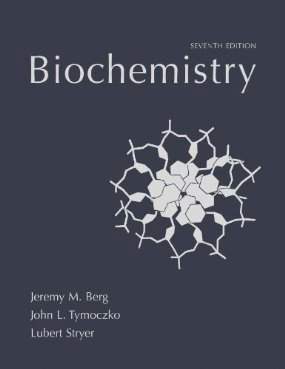Connecting...

For more information, please see full course syllabus of Biochemistry
Biochemistry Amino Acids
Proteins are macromolecules made up of long chains of amino acids. They are very abundant in nature and can fold and bend into many shapes and forms, playing a part in many different biological systems. There are 20 alpha-amino acids that can be arranged in different orders and in different lengths to produce proteins. These amino acids are made up of an alpha carbon that has a hydrogen, carboxylic acid group, amino (nitrogen-containing) group, and an additional “R” group attached. Fischer projections can be used to draw the structural configuration (left or right handed enantiomer). Amino acids can be classified by their chemical properties (polarity, aromatic R-groups, charge, etc.). This lecture contains a list of the most important amino acids as well as their structures.
Share this knowledge with your friends!
Copy & Paste this embed code into your website’s HTML
Please ensure that your website editor is in text mode when you paste the code.(In Wordpress, the mode button is on the top right corner.)
- - Allow users to view the embedded video in full-size.










































 Answer Engine
Answer Engine




1 answer
Fri Dec 27, 2019 7:40 AM
Post by William Dawson on December 22, 2019
Why are BCAA's (Leucine, Isoleucine, Valine) functionally associated ?
1 answer
Thu Aug 23, 2018 8:16 AM
Post by Anthony Villarama on August 21, 2018
This professor is so good. He is organize an explains very well. But what I like about his teaching most is he doesn't go around the bush.
0 answers
Post by Mohamed E Sowaileh on June 12, 2016
Hello Dr. Hovasapian,
Thank you for the immediate response. I am very grateful to you for the invaluable guidance you gave me. May God bless you.
sorry for my very late response, I forgot that I asked you a question!
3 answers
Wed May 11, 2016 2:30 AM
Post by Mohamed E Sowaileh on May 8, 2016
Dr. Raffi Hovasapian ,
I hope you are doing very well,
Someone has never taken a deep and comprehensive general chemistry course, do you recommend him to take G. chemistry course first, because I guess biochemistry then would be a lot more easier and more understandable than if I didn't take G. chemistry. am I correct? or do you think that the quick review you made is quite sufficient? I appreciate your help.
Thank you.
1 answer
Fri Sep 12, 2014 5:17 PM
Post by Jenika Javier on September 12, 2014
Why are all amino acids in the L-Configuration and what will the consequences of this be?
2 answers
Last reply by: tashi thukhotsong
Thu Oct 10, 2013 1:42 PM
Post by tashi thukhotsong on October 7, 2013
shouldn't hydrogen be perpendicular to R-group alpha-Amino acids drawn at 3:52. Not sure if the orientation is correct??
1 answer
Last reply by: Shannen Brown
Tue Jun 25, 2013 2:39 AM
Post by Mahir Ahmed on May 5, 2013
Hi Sir
Iam adamant that there something unusual with this site,if you want to watch the lectures they are ok,but if you want to download them using internet download manager(IDM)you get two separate FLV files ,one for the explanation and one for Dr Hovasapian.Please help.
Thanks